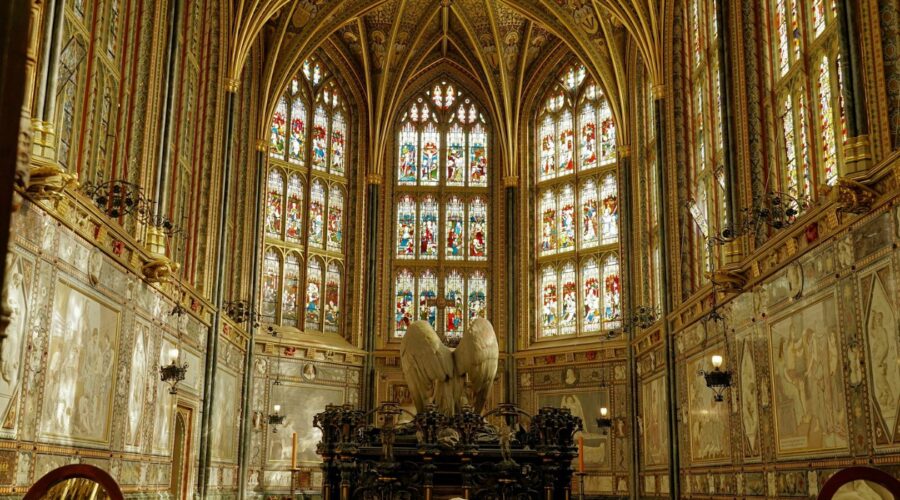Your cart is currently empty!
Marvel at the Architectural Masterpiece: A Comprehensive Guide to St. Stephen’s Cathedral

Introduction
Nestled in the heart of Vienna, St. Stephen’s Cathedral stands as a beacon of architectural brilliance, a testament to the city’s rich history and enduring faith. This magnificent Gothic masterpiece has witnessed centuries of religious, political, and cultural events, leaving an indelible mark on the Austrian capital.
In this comprehensive guide, we will delve into the captivating world of St. Stephen’s Cathedral, exploring its breathtaking architecture, fascinating history, and cultural significance. Prepare to be inspired as we uncover the secrets of this architectural marvel.
History
The origins of St. Stephen’s Cathedral can be traced back to the 12th century, when a Romanesque church stood on the site. However, it wasn’t until the early 14th century that Duke Rudolf IV initiated the construction of a grander Gothic cathedral to rival the great cathedrals of Europe.
Construction and Expansion
- 1359: The foundation stone was laid, beginning the ambitious project that would span centuries.
- 1433: The nave and choir were completed, marking a significant milestone in the cathedral’s construction.
- 15th Century: The soaring towers were erected, reaching a height of 136 meters (446 feet).
- 16th Century: The ornate Pummerin Bell, weighing 21 tons, was cast and installed in the North Tower.
- 17th and 18th Centuries: Baroque additions were made, including the ornate High Altar and pulpit.
- 19th Century: Extensive renovations and restorations were undertaken to preserve the cathedral’s grandeur.
Historical Events
St. Stephen’s Cathedral has played a pivotal role in Viennese history:
- Imperial Weddings and Coronations: Many Austrian emperors and empresses were crowned and married within the cathedral’s hallowed halls.
- Mozart’s Requiem: The composer’s iconic work was performed at his funeral service in the cathedral in 1791.
- World War II Bombing: The cathedral suffered severe damage during bombing raids in 1945, but was meticulously restored in the postwar years.
Architecture
St. Stephen’s Cathedral is a masterpiece of Gothic architecture, blending intricate details with a sense of ethereal grandeur.
Exterior
- Towers: The cathedral’s two towers, the North and South Towers, are its most iconic features. The North Tower, accessible via a climb of 343 steps, offers panoramic city views.
- Roof: The colorful tiled roof, designed by master builder Hans Puchsbaum in the 15th century, is adorned with the Austrian eagle and other intricate patterns.
- Sculptures: The facade is adorned with numerous sculptures, including the 14th-century “Wiener Neustadt Altar” and the “Singer Gate,” featuring intricate carvings of musicians and artisans.
Interior
- Nave and Choir: The soaring nave, with its ribbed vaults and stained-glass windows, leads to the spacious choir. The choir stalls are exquisitely carved and feature scenes from the life of Christ.
- High Altar: The Baroque High Altar, designed by Johann Bernhard Fischer von Erlach in the 17th century, is a magnificent work of art, adorned with gold and marble.
- Catacombs: Beneath the cathedral lie the eerie catacombs, where the remains of past Archbishops, clergy, and nobles are interred.
- Treasury: The cathedral’s treasury houses a collection of precious relics, including the relics of St. Stephen and the Austrian imperial crown.
Cultural and Religious Significance
St. Stephen’s Cathedral is not only an architectural masterpiece but also a profound religious and cultural symbol.
Religious Center
- Archdiocese of Vienna: The cathedral is the seat of the Archbishop of Vienna and the center of the Archdiocese.
- Patron Saint of Vienna: St. Stephen, the cathedral’s namesake, is the patron saint of Vienna, and his feast day is celebrated on December 26th.
- Pilgrimage Site: The cathedral is a popular pilgrimage site for Catholics worldwide, who come to venerate the relics of St. Stephen.
Cultural Landmark
- Symbol of Austria: St. Stephen’s Cathedral is a beloved symbol of Vienna and Austria, appearing on postage stamps, coins, and souvenirs.
- Concert Venue: The cathedral’s acoustics make it an ideal venue for concerts of classical music and organ recitals.
- Tourism Destination: The cathedral is one of Vienna’s most popular tourist attractions, drawing millions of visitors annually.
Tips for Visiting
- Best time to visit: Early morning or late afternoon, when the crowds are smaller.
- Dress code: Respectful attire is recommended, as the cathedral is a religious site.
- Accessibility: Limited wheelchair access is available through the Giant’s Gate.
- Guided tours: Guided tours are available to enhance your experience and learn more about the cathedral’s history.
- Ticket prices: Check the official website for current ticket prices and discounts.
Conclusion
St. Stephen’s Cathedral is an architectural marvel that embodies the history, faith, and cultural spirit of Vienna. From its intricate Gothic exterior to its sacred and ornate interior, every aspect of the cathedral is a testament to the ingenuity and artistry of its creators. As you explore this magnificent edifice, let its grandeur inspire awe and wonder, and delve into the rich tapestry of stories that have unfolded within its hallowed halls.
Whether you are a devout pilgrim, an architecture enthusiast, or simply a curious traveler, St. Stephen’s Cathedral is an unforgettable destination that will leave a lasting impression on your soul.